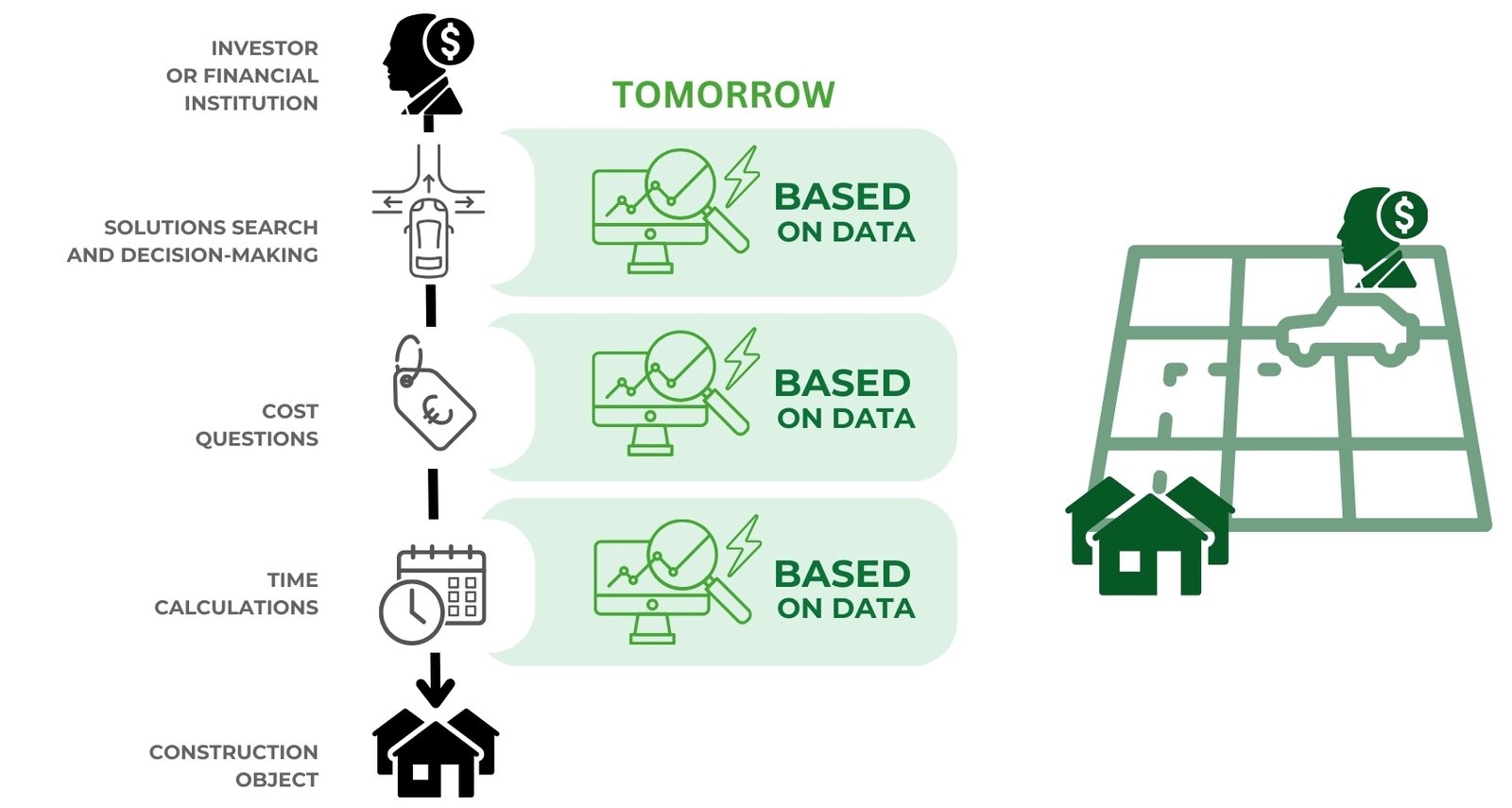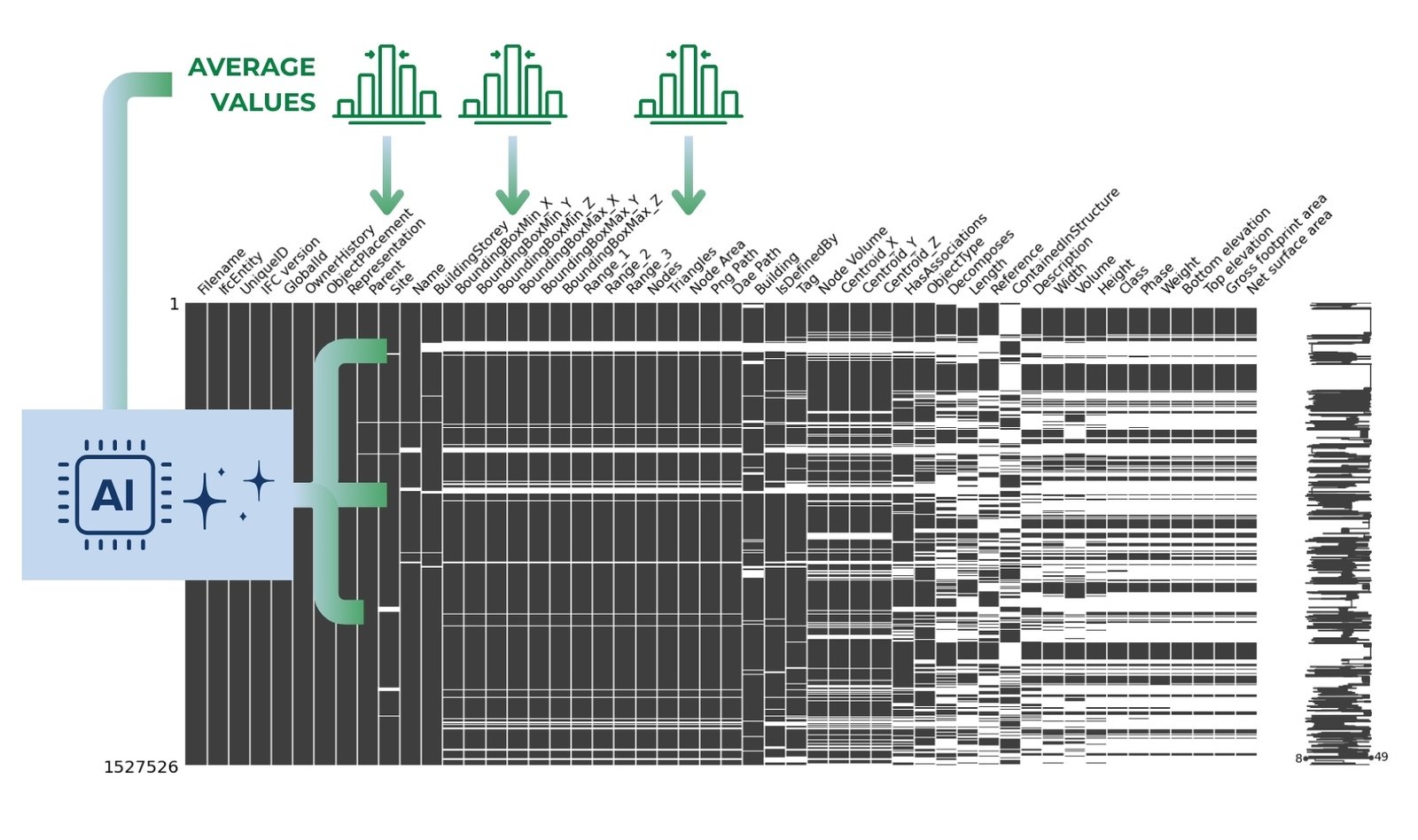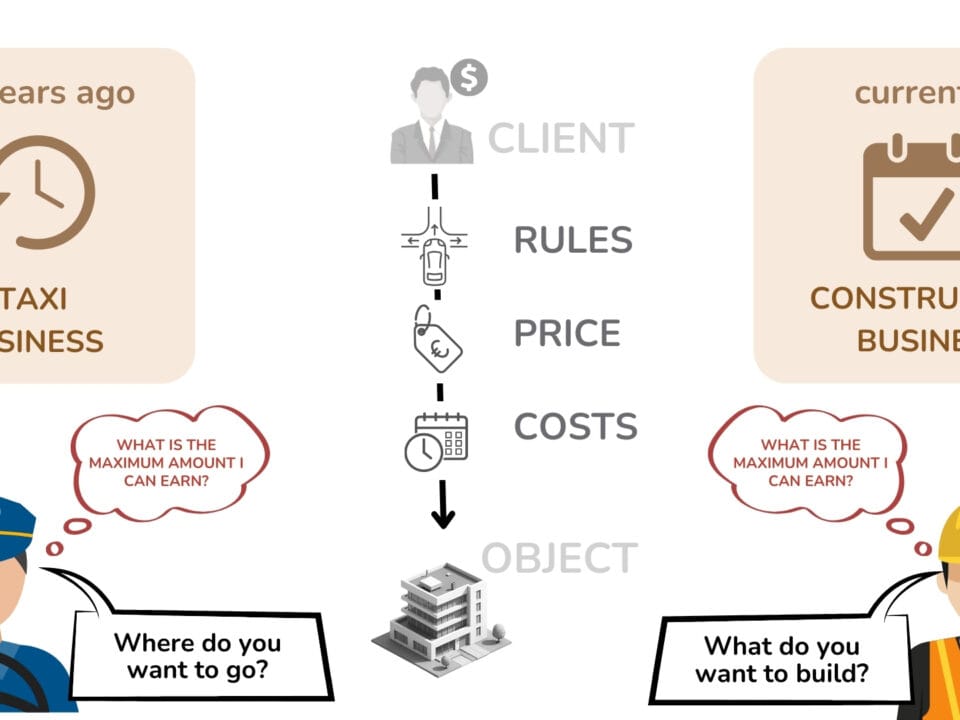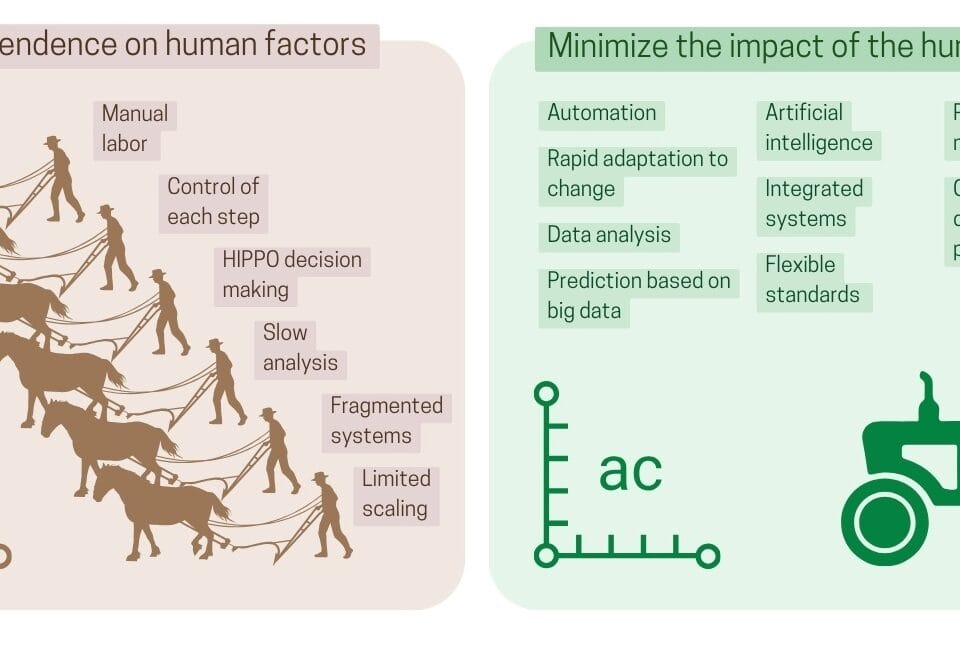But let’s return to the realities of the construction industry. While self-driving cars, decentralized financial systems and artificial intelligence-based solutions are emerging in some sectors of the economy, a significant part of construction companies still remain paper-based organizations where key decisions are made rather on the basis of intuition and experience of individual specialists.
In this paradigm, a modern construction company can be compared to a 20-year-old taxi company that controls resources, routes and delivery times, and is responsible for the timing and cost of the “trip” – from the project idea (logistics and installation process) to project delivery. Just as GPS (in construction IoT, RFID) and machine learning algorithms in time/costing calculations once transformed transportation, data, algorithms and AI -agents are poised to transform construction management – from intuitive assessments to predictive, guided models. Over the past 20 years, many industries – finance, agriculture, retail, and logistics – have gradually eliminated the ability to speculate through the opacity of data. Prices, shipping costs or financial transactions are calculated automatically and statistically sound – in just a few seconds on digital platforms.
Looking to the future, construction companies must realize that democratizing access to data and the tools to analyze it will disrupt the traditional approach to estimating project costs and timelines and eliminate the ability to speculate on opaque volume and pricing data.
Like driving on a regulated road without driver intervention, the construction processes of the future will increasingly resemble an “Uberized” system – with automated time and cost estimation, transparent task routing and minimal dependence on human factors. This will change the very nature of the ‘journey’ from idea to realization – making it more predictable, manageable and data-driven.

With the gradual introduction of new regulations and requirements in almost every country in the world, which oblige to transfer CAD- (BIM)-models to clients or banks financing construction projects, the client and customer have the opportunity to independently ensure transparency of cost and scope calculations. This is especially relevant for large customers and investors, who have sufficient competencies and tools for operational analysis of volumes and monitoring of market prices. For companies implementing large-scale standard projects – stores, office buildings, residential complexes – such practices are becoming standard.
As the information content of models becomes more complete and standardized, the possibility of manipulation and speculation virtually disappears. Digital transformation is gradually changing the rules of the game in the construction industry, and companies that do not adapt to these changes may face serious challenges.
Increased competition, technology disruption and shrinking margins have the potential to impact business sustainability. With liquidity constraints, more and more industry players are turning to automation, analytics and data technologies as a way to improve efficiency and process transparency. These tools are becoming an important resource to remain competitive in a changing economic environment.
It may not be worth waiting for external circumstances to force urgent action – it is much more effective to start preparing today by strengthening digital competencies, implementing modern solutions and building a data-centric culture.
One of the last key technological barriers to the large-scale digital transformation of the construction industry, which will affect every company in the coming years, is the problem of automatic classification of elements of construction projects.
Without reliable, accurate and scalable classification, it is impossible to create a basis for full-fledged analytics, process automation and lifecycle management using AI and predictive models. As long as object classification still depends on manual interpretation by experienced specialists – foremen, designers, estimators – the construction industry still has a window of opportunity. This time can be used to prepare for the inevitable changes: increasing demands for transparency, democratization of tools and data, and the emergence of automatic classification systems that will radically change the rules of the game.
The task of automatic classification of elements of the construction world is comparable in its complexity to object recognition in unmanned driving systems, which is one of the main challenges. Let us imagine an unmanned car traveling from point A to point B (Fig. 10.1-5). Current automatic driving systems are bogged down by the problem of classifying objects that are recognized by lidars and cameras. It is not enough for a car to simply “see” an obstacle or landmark; it must know without error whether it is a pedestrian, a road sign, or a garbage can.
A similar fundamental challenge faces the entire construction industry. Project elements – such as windows, doors or columns – can be captured in documentation, represented in CAD models, photographed on the construction site or recognized in point clouds from laser scanning. However, just their visual or rough geometric recognition is not enough to build a truly automated project management system. It is necessary to ensure accurate and stable classification of each element by type, which will be unambiguously identifiable in all subsequent processes – from estimates and specifications to logistics, warehousing and most importantly – operation (Fig. 4.2-6).
It is at this stage – the transition from recognition to meaningful classification – that one of the key obstacles arises. Even if digital systems are technically capable of distinguishing and identifying objects in models and on the construction site, the main difficulty lies in the correct and contextually stable definition of the element type for different software environments. For example, a door may be designated by the designer in a CAD model as an element of the category “door”, but when transferred to an ERP or PMIS system, it may be incorrectly typed – in case of an error on the part of the designer or due to inconsistencies between the systems. Moreover, the element often loses some important attributes or disappears from the system accounting during data exports and imports. This leads to a gap in the data flow and undermines the principle of end-to-end digitalization of construction processes. Thus, a critical gap between “visible” and “understandable” semantic meaning is formed, which undermines data integrity and significantly complicates the automation of processes throughout the entire life cycle of a construction project.
Solving the problem of universal classification of building elements using big data and machine learning technologies (Fig. 10.1-6) will be a catalyst for industry-wide transformation – and perhaps an unexpected discovery for many construction companies. A unified, trainable classification system will be the foundation for scalable analytics, digital management and the adoption of AI into the daily practices of construction organizations.
NVIDIA and other technology leaders are already offering solutions in other industries that can automatically categorize and structure vast amounts of textual and visual information.
NVIDIA‘s NeMo Curator model (NVIDIA, “Enhance Your Training Data with New NVIDIA NeMo Curator Classifier Models,” December 19, 2024), for example, specializes in automatically classifying and categorizing data into predefined categories, playing a key role in optimizing information processing pipelines for fine-tuning and pre-training generative AI models. The Cosmos platform is trained on real-world video and 3D-scenes (“NVIDIA Announces Major Release of Cosmos World Foundation Models and Physical AI Data Tools,” March 18, 2025), providing a foundation for autonomous systems and digital twins that are already being built in the NVIDIA ecosystem. NVIDIA Omniverse, which by 2025 has become the leading tool for working with the USD format, a universal scene description that could eventually replace the IFC format in design information delivery processes. Together with Isaac Sim, a robotic process simulator (NVIDIA, “NVIDIA Isaac Sim,” [On the Internet]. Available: https://developer.nvidia.com/isaac/sim. [Accessed March 25, 2025]), solutions such as NeMo Curator, Cosmos, and Omniverse represent a new level of automation: from data cleaning and filtering to training set generation, object property modeling, and robot training on the construction site. And all of these tools are free and open source, significantly reducing barriers to adoption in engineering and construction practices.
Automatic classification of data at the level of structured tables is not as difficult a task as it may seem at first glance. As we have shown in the previous chapter (Fig. 9.1-10), it is possible to make up for missing or incorrect class values on the basis of similar parameters of other elements if there is accumulated historical data. If elements with similar characteristics have already been classified correctly in several completed projects, the system can suggest a suitable value for a new or incomplete element with a high probability (Fig. 10.1-6). Such logic, based on averaged values and context analysis, can be particularly effective when mass processing tabular data coming from estimates, specifications or CAD models.

Against the backdrop of such rapid progress in machine learning, it is clear: in 2025, it is naive to believe that the problem of automatic classification of building elements will remain unsolved for a long time. Yes, current algorithms have not yet reached full maturity, especially with incomplete or heterogeneous data, but the window of opportunity for adaptation is rapidly closing.
Companies that are already investing in collecting, cleaning and organizing their data, as well as adopting ETL automation tools, will be at an advantage. The rest risk falling behind – just as companies once failed to meet the challenges of digital transformation in the transportation and financial industries
Those who continue to rely on manual data management and traditional methods of cost and time estimation risk finding themselves in the position of the taxi fleets of the 2000s, unable to adapt to the era of mobile apps and automated route calculations by the early 2020s.




















